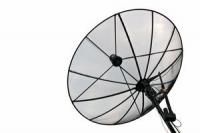Select strings for jazz guitar
If you want or need to wind up new strings for a jazz guitar, also known as a percussion or rhythm guitar, you should go to After choosing a fresh set, consider a few aspects before you decide to buy and thus your instrument is new string.
How to recognize a jazz guitar
The jazz guitar usually has six strings and is offered in two basic forms: as a semi-acoustic model and as a half-resonance version. A famous semi-acoustic model is the George Benson model by Ibanez, with a cutaway that is shaped by a wider sides, similar to that of a Spanish guitar, differs from the semi-resonance guitar type and is usually played while seated will. To the semi-resonance guitar is u. a. to name the 335 model from Gibson, which is one of the preferred guitars of Larry Carlton or John McLaughlin. It can be visually distinguished by two cutaways, the rounded ends and the smaller center hole. It has two so-called F-holes as a resonance opening in the ceiling. Chuck Berry and Alvin Lee from Ten Years After always rely on the full, warm sound of this series. The latter caused a sensation with a 335 at the legendary Woodstock Festival. Since Django Reinhardt, in big bands, at Bireli Lagrene's Zigan-Jazz, or in modern jazz by Lee Ritenour and Volker Kriegel, jazz guitars can be used in many ways. Most of them are factory-fitted with electrical pickups. There are also purely acoustic instruments with a fully resonant body, the sound of which you have to pick up with a subsequently fitted pickup or with a microphone. There are also brands that have nylon strings and a built-in pickup. What you should be aware of:
- Consider whether you are an accomplished gamer, intermediate, or beginner at the learning stage. Be honest with yourself when doing this.
- Classify or specify which construction your instrument corresponds to. Do you need steel or nylon strings?
- Does your instrument have a longer scale length? There are different fretboard lengths (scale): Short, Medium and Long Scale, depending on the number of frets on the fingerboard and the distance between the frets. The medium scale is the most common. The length of the strings is also decisive.
- Semi-acoustic instruments can also be played without electrical amplification.
The guitar is available in many different forms and for ...
Choose the right strings for a jazz guitar
- Steel strings are required for guitars with external pick ups. The resonance is picked up directly from the string.
- The most common strings are roundwounds, the bass strings (D4, A5, E6) of which are wrapped with round, nickel-plated steel wire. Alternatively, strings without nickel are available.
- For a guitar that transmits the resonance through pickups integrated in the body, there are nylon strings.
- The bass strings are usually "silver plated" and have a steel wire as a core. In rare cases there is also the G3 string with a metal wrap.
- Strings for electric guitar - and this is usually a jazz guitar - come in different strengths: Light, Extra Light, Medium, Strong. These are the groups of names for the thickness of the string and the thickness of the covering. Extra Light (009 / E1) is preferred because the neck of the guitar does not have to withstand as much tension from the string. They can be played more easily and fluently. When using certain playing techniques such as B. pulling the string up or down on the respective fret, which intentionally changed but controlled you volume causes this is very useful. Your fingers will thank you.
- For 6-string sets, the thinnest string (E1) is specified with a gauge of 008. It is very easy to play, but with an increased risk of tearing! The wrapped bass strings are z. B. Made in an extra light set with 024 for the D string, 032 for A and 042 for the E6 string.
- Stronger sets of strings from 010 / E1 may produce a thicker sound, but are more difficult to play and have limited possibilities in terms of playing technique.
- Do not be afraid to seek advice from the staff in music stores. Play different instruments to get a feel for playability, sound and grip. A good specialist salesperson is usually himself a musician with many years of experience and should know which strings of which quality the respective instrument is strung with.
- For usable, sensible strings with a price starting at approx. Expect 5 to 7 euros. The price scale is open at the top.
- Remember that expensive strings don't have to be the best strings at the same time. Try different brands over time. Start with a mid-range sentence.
- Consider whether you have a nickel allergy. Many makes are made using nickel. This can be seen on the outer packaging and marked with "Nickle Wound" or "Nickel Plated Steel". This can have physical effects if you are a beginner and the fingertips of the grip hand have not yet formed a callus.
Whatever you decide, it is important that you have made the right choice for yourself and that you have fun playing. In the beginning it really hurts. Don't give up right away, practice makes perfect.


